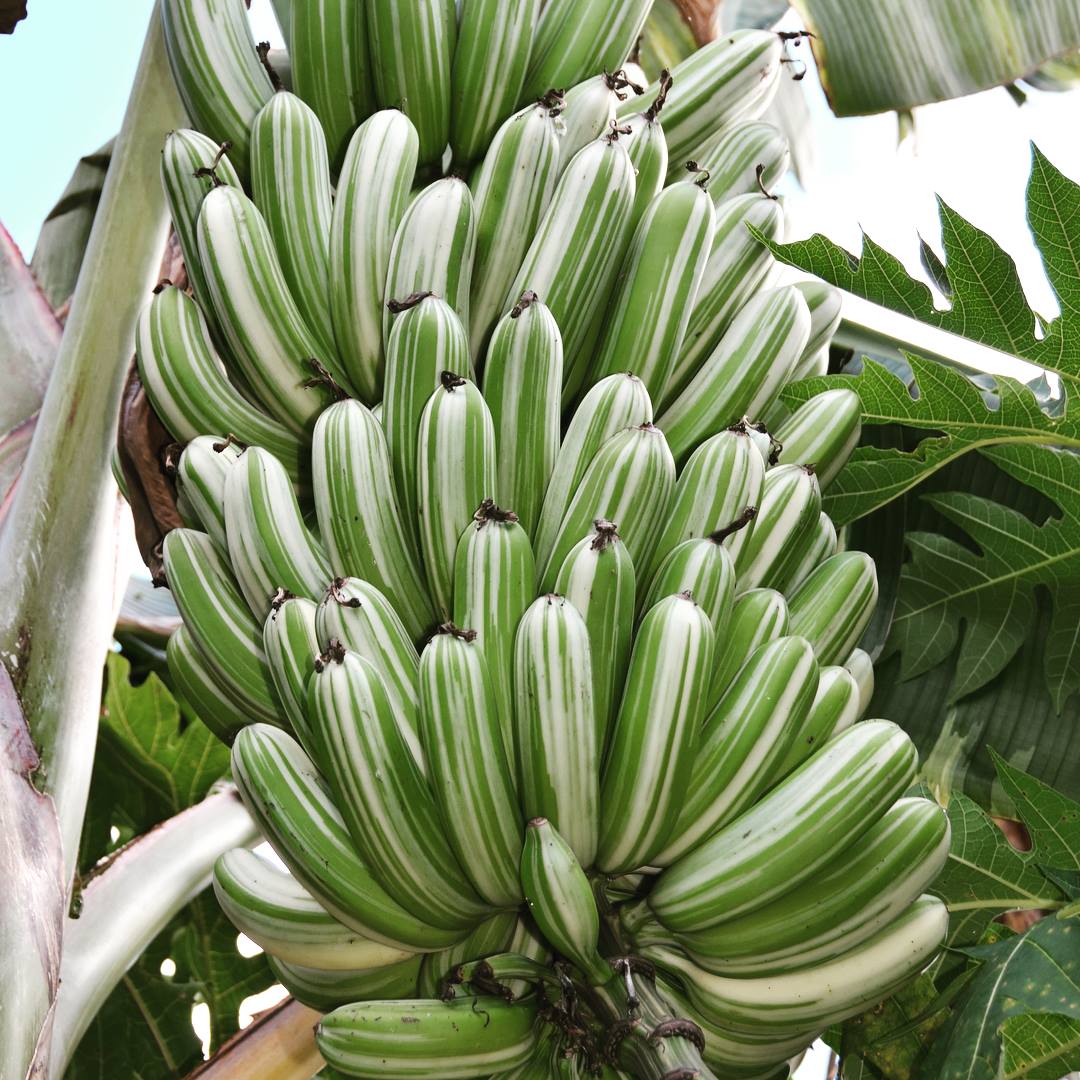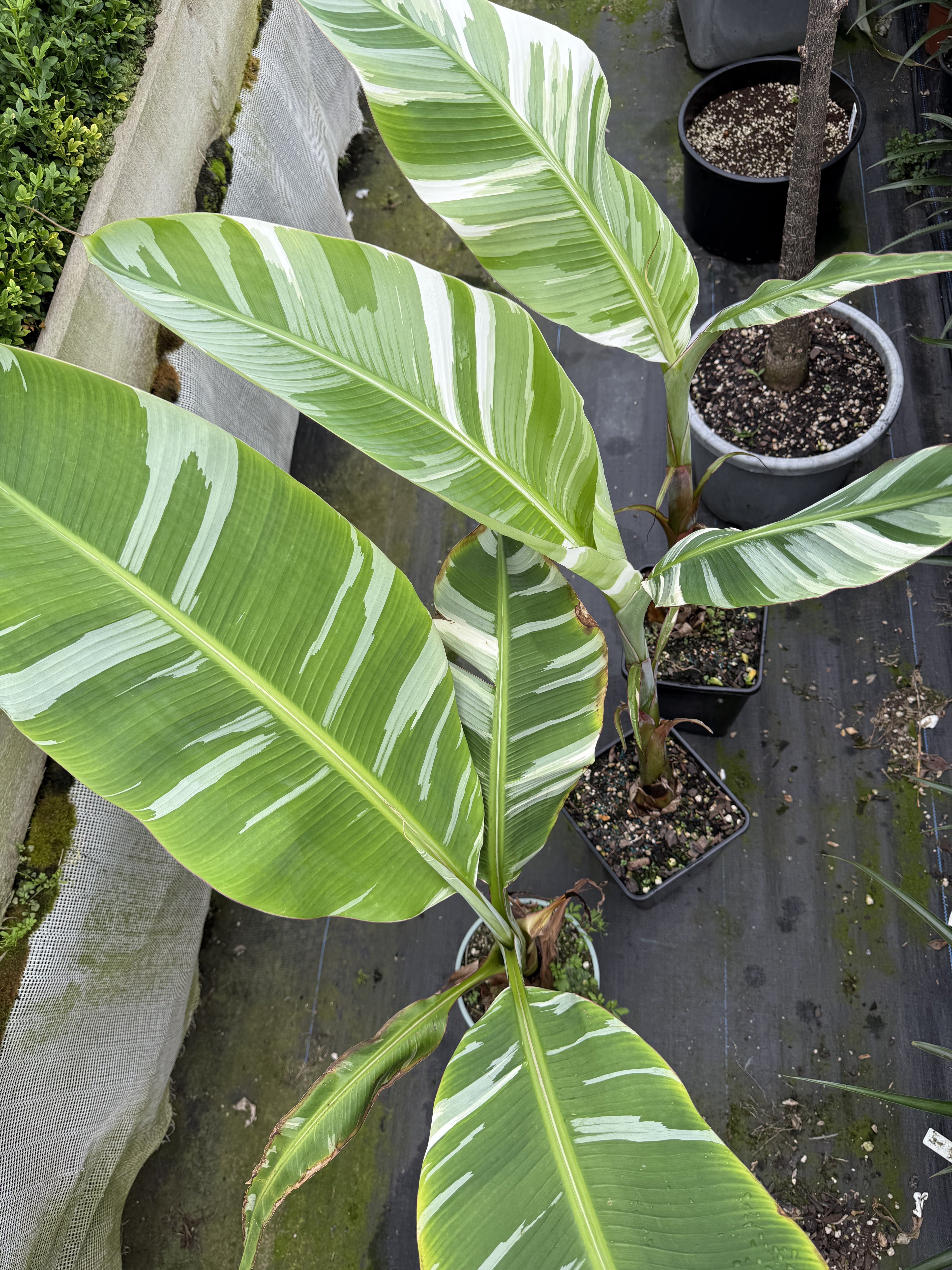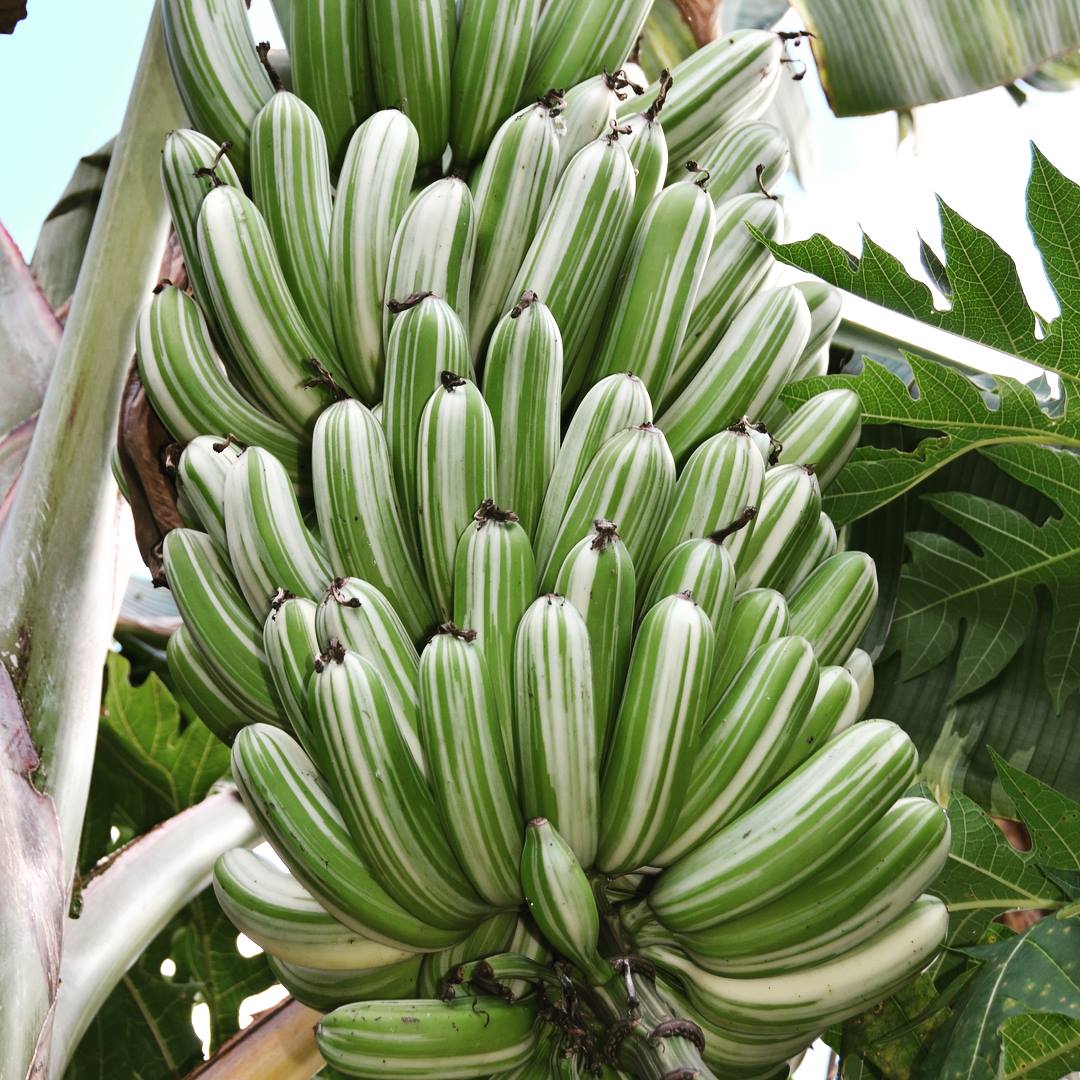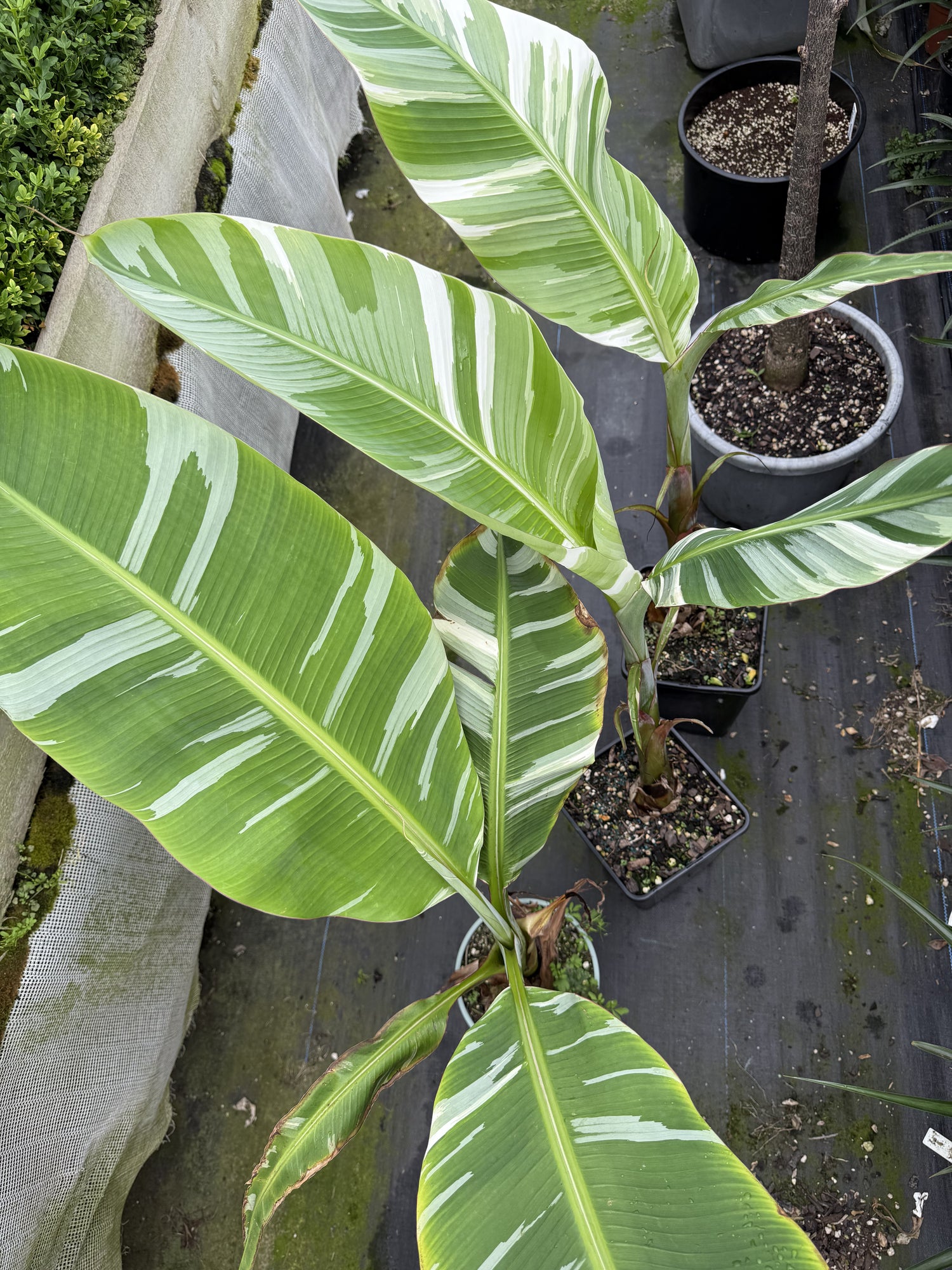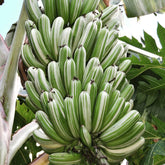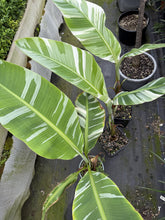Banana - Royal Hawaiian (Variegated Ae Ae)
- Regular price
-
$499.00 - Regular price
-
- Sale price
-
$499.00
Couldn't load pickup availability
The Royal Hawaiian banana, also known as Musa Ae Ae, is a rare and exquisite banana tree indigenous to Hawaii. Highly sought after globally, this cultivar stands out for its striking variegation on its leaves and fruit, making it a prized asset in any sub-tropical or tropical garden. This tall, upright tree can reach heights of 5-6 meters, featuring expansive leaves with a creamy white and green variegation. The bananas produced on this very ornamental plant are also edible, which are creamy and sweet, similar to other bananas cultivated for their fruit in New Zealand.
The Royal Hawaiian banana is a low-maintenance gem that effortlessly adapts to both indoor and outdoor settings, flourishing in various environments. It thrives in slightly acidic soil, promoting vivid variegation. If you're located north of the Auckland region in a frost-free area, you can grow it outdoors; otherwise opt for sunny, sheltered spots or indoor cultivation in colder regions.
Banana Plant Care Tips
-
Sunlight: Banana plants thrive in full sun, so it's best to plant them in an area that receives at least 6-8 hours of direct sunlight per day.
-
Soil: Banana plants prefer well-drained soil that is rich in organic matter. A pH range of 5.5-7.0 is ideal for optimal growth.
-
Watering: Banana plants require regular watering, especially during the growing season. Keep the soil moist, but not waterlogged. Overwatering can cause the roots to rot.
-
Fertilizer: Banana plants are heavy feeders and require regular fertilization. Apply a balanced fertilizer every 4-6 weeks during the growing season.
-
Mulching: Mulch around the base of the plant to help retain moisture and suppress weeds.
-
Pruning: Remove any dead or damaged leaves and suckers (smaller offshoots that grow from the base of the plant) regularly. This will help promote healthy growth and prevent disease.
-
Pests and diseases: Banana plants are susceptible to a variety of pests and diseases, so it's important to monitor the plant regularly for any signs of infestation or disease. Common pests include aphids, spider mites, and mealybugs, while common diseases include Panama disease and Sigatoka leaf spot.
-
Harvesting: Bananas are typically harvested when they are fully ripe and the skin is yellow. Cut the bunch off the plant with a sharp knife and allow the fruit to ripen further at room temperature.
